Matador Network's Blog, page 509
March 23, 2022
Where To See the Real-World New York City Homes Shown in HBO’s ‘The Gilded Age’

Edith Wharton, eat your heart out: The Gilded Age, HBO’s latest iteration of ‘sassy shows about uber-rich White people,’ takes a semi-historical look at New York City life in 1882.
It’s a high-snobriety showdown between old money and new. On one side of the ring — or in this case, 61st Street — we have Agnes Van Rhijn (Christine Baranski), a widowed elitist who prefers her social hierarchy with a side of pre-Revolutionary War DNA. On the other, we have George and Bertha Russell (Morgan Spector and Carrie Coon) — a nouveau riche railroad tycoon and his social-climber wife, who use money to get cozy with the city’s upper crust. It’s tons of table settings, tea, and melodramatic dialogue delivered by an absurd number of Tony Award-winning actresses.
The performers, however, often play second fiddle to something even more over-the-top — the set. Magnificent mansions, lush interiors, and brownstone-lined streets are the unscripted stars of every scene. Watching the show feels like taking a tour through old New York.
But what would Edith Wharton think? The 19th-century author portrayed the lives of her contemporary aristocrats in novels like The Age of Innocence; she wrote about their homes in the interior design guide The Decoration of Houses. When compared to her historically accurate works, The Gilded Age occasionally feels phony.
To HBO’s credit, the show does yeoman’s work to recreate a credible depiction of 19th-century New York. Before filming, cast members took lessons on Gilded Age history, etiquette, and diction. Historical figures and circumstances regularly come to life on the screen. Real Gilded Age mansions around New York and Rhode Island make up a portion of the sets. Antique props, including a period-perfect printing press, are featured in nearly every shot.
Still, this isn’t a museum piece — it’s a melodrama. “The real desire (was) to (create) the feeling of what it meant to be wealthy at that time,” Rutgers history professor Erica Armstrong Dunbar recently told Vanity Fair. Dunbar serves as the show’s historical consultant and co-executive producer. Wharton likely wouldn’t be fooled by this prime-time frippery.
If you roam through present-day New York City or nearby Newport — and you know where to look — you might not be fooled, either. Here are a few things The Gilded Age gets wrong about New York City and where to see the remnants of its namesake era.
61st Street and 5th AvenueFictionIn episode one, “Never the New”, we learn that old-money aristocrat Agnes van Rhijn lives in a Central Park-adjacent brownstone on the corner of 61st and 5th Avenue overlooking the Russells’ new white-stone fortress.
FactTo place the van Rhijns and the Russells on the same uptown block makes delicious melodrama, but it doesn’t pass a fact check.
Keith Taillon, a researcher, writer, and historian who offers weekly Gilded Age recaps on Instagram, notes in his stories that 61st Street was a “goat-infested wilderness” — not a place for hoity-toity aristocrats. A van Rhijn wouldn’t be caught dead with livestock for neighbors.
In 1882, wealthy brownstoners lived in “chocolate-covered” Murray Hill (as described in Edith Wharton’s memoirs), which started around 23rd Street and 5th Avenue. Even new money had yet to move to 61st Street. Real-life couple William K. Vanderbilt and his wife Alva, to whom the Russells bear resemblances, broke boundaries in 1882 by building an extravagant chateau on 52nd Street — almost half a mile south. But don’t try your luck seeing it — developers razed the mansion in 1927.
Where to see it
Photo: Edi Chen/Shutterstock
For the milk-chocolate homes of Wharton’s memories, walk west of 3rd Avenue between 35th and 38th Streets to peep homes protected by the Murray Hill Historic District. Many of the area’s buildings, constructed between 1853 and 1910, are similar to where Agnes might’ve lived in 1882. Still, it’s hard to feel transported while walking around — Manhattan’s contemporary skyscrapers poke through the old-world veneer around every corner.
For a skyscraper-free view of brownstones, head instead to Brooklyn Heights — a candy shop for 19th-century architecture buffs. Tour its Gilded Age glory by walking around the Center for Brooklyn History (1881), designed by George B. Post, who’s name-dropped in the show. Next, weave along Pierrepont Street to Columbia Heights, where historic houses are chockablock until you reach the Brooklyn Heights Promenade. Roughly 1,000 of the neighborhood’s homes predate the 20th century.
The streetsFictionAside from a few horse droppings in several street scenes, The Gilded Age makes New York City look cleaner than Disneyland. Even the show’s dirt paths seem to sparkle.
FactNew York might be notorious for its modern-day grime, but it was exceptionally stinky in the 19th century. Even though public uproar over the city’s smells helped create the Department of Street Cleaning in 1881, it wasn’t until 1895 that anyone started actively sweeping streets and collecting garbage.
Horse manure aside, refuse likely muddied 61st Street between the Russells and van Rhijns — including a few piles of poo gifted by Pumpkin, the Cavalier King Charles Spaniel beloved by Agnes’s sister, Ada (Cynthia Nixon).
Where to see itIf you want to find some old-world dirt, take a suggestion from Agnes: “Why don’t we just go outside and roam in the gutter,” she quips about socializing with the Russells. “It will save time.”
The Russell homeFictionThe Russells’ newly constructed limestone mansion — designed by real-life architect Stanford White — quickly becomes the ire of New York society. It’s the definition of garish: plated in gold, dripping in silk, and covered in European art.
FactThe Russell home isn’t entirely real — it’s a collage created with sets, historic rooms, and CGI — and Stanford White isn’t one of the designers.
The ballroom, awash in red velvet curtains and gold trimming, is actually the music room in The Breakers — a Newport, Rhode Island summer house designed by Richard Morris Hunt for Cornelius Vanderbilt II in the 1890s. Mr. Russell’s billiards room is also from The Breakers, and his bedroom is from Marble House (1892), another Hunt-designed home. Both his daughter’s bedroom and the kitchen are from The Elms (1901) — a third Newport mansion. None of these are actual Manhattan residences — they’re all seasonal spots built a decade or more after the show takes place.
If the home’s entrance hall doesn’t seem in sync with the rest of the interiors, that’s because it’s a set. Taillon laments the wrought-iron balustrade used in the room — wood is more appropriate for 1882 — but the bigger faux pas is the interior’s lack of flashy flavor. Unlike the heavily-ornamented Newport mansions, the entrance hall looks tame. It seems even HBO’s top-tier production values can’t compete with the excessive wealth used in Gilded Age design.
As for the building’s facade — it’s also part of a set imagined by designer Bob Shaw and his team of artists. According to New York Magazine, Shaw drew inspiration from The Sloane House (1894) — an Upper East Side mansion designed by architects Carrère & Hastings, whose founders previously worked for Stanford White’s firm. The home’s carriage entrance brings to mind the Cooper Hewitt building, completed in 1902 for Andrew Carnegie. But the Russells’ Corinthian-style columns most closely resemble the Vanderbilt Triple Palace (1882), designed by John B. Snook and Charles B. Atwood. A moat encircled the bottom floor, letting light into the basement — an ingredient missing in the Russell home. Brownstone also covered the Triple Palace, not the white exterior favored by the Russells — a detail Wharton might approve. (In The Age of Innocence, Wharton modeled a character after her real-life aunt, Mary Mason Jones, who turned heads by building a white marble mansion along 5th Avenue.)
Where to see it
Photo: Alexander Prokopenko/Shutterstock
Many of The Gilded Age‘s grandest mansions got demolished by the mid-20th century, but if you skip above 70th Street on 5th Avenue, it’s possible to see a smattering of homes along what was once called ‘Millionaires Row.’
Start at steel magnate Henry Clay Frick’s Beaux-Arts mansion (1914) — now a classical art museum on 70th Street. With a limestone exterior shaped like the Triple Palace, the fortress is the closest you’ll get to walking through the doors of the Russells’ not-so-humble abode. Next up is the Ukrainian Institute of America (1899), located on 79th Street — a Gothic castle that rivals William and Alva Vanderbilt’s long-gone chateau. Finally, mosey to 91st Street, where Andrew Carnegie’s English Georgian mansion appears like a Bertha Russell daydream.
Beechwood MansionFictionBertha leaves the big city for Rhode Island in episode eight, “Tucked up in Newport,” and finds herself at Beechwood — home of non-fiction socialite Mrs. Astor. A camera shot swoops around the home’s slate-gray Victorian architecture just as Bertha pulls up in a carriage.
FactThis home isn’t actually Beechwood — it’s Chateau-sur-Mer, a different Newport mansion constructed in 1852. Mrs. Astor’s real Beechwood, a cream-white confection overlooking the Atlantic, was built around the same time but in the Italianate style.
Where to see it
Photo: solepsizm/Shutterstock
Newport, Rhode Island — Gilded Age getaway for New York’s wealthiest residents — remains a treasure trove of 19th-century design. Most of the ‘cottages,’ as their owners laughably called them, are sprinkled along historic Bellevue Avenue and Ochre Point.
Thanks to the Preservation Society of Newport County, it’s possible to tour places like Chateau-sur-Mer, The Breakers, The Elms, and Marble House while getting the low-down on their former owners. As for Beechwood, you’ll have a hard time gaining access. The property is owned by new-money magnate Larry Ellison, the world’s 9th richest person. Old-guard Mrs. Astor would be horrified.
Sylvia Chamberlain’s art collectionFictionEpisode seven (“Irresistible Change”) takes us to the home of social pariah Sylvia Chamberlain (Jeanne Tripplehorn), where we see Edgar Degas’s wax sculpture of La Petite Danseuse de Quatorze Ans (The Little Dancer Aged Fourteen).
FactWhile the French Impressionist’s sculpture fits the period, it’s not likely anyone would’ve owned it. Degas completed the piece circa 1881 and exhibited it that spring. Critics panned the work, and the artist never showed it again in his lifetime. According to the Metropolitan Museum of Art, a New York-based art collector named Louise Havemeyer attempted to purchase the sculpture from Degas in 1903, but Degas refused to sell.
Where to see itAfter Degas died in 1917, his heirs replicated the statue in bronze. One of those statues stands in the Met, a grand Gilded Age museum constructed in 1870. You can find the original wax sculpture in Washington DC’s National Gallery of Art. 
LGBTQ+ guide to Toronto

Toronto has been a major draw for tourists of all kinds. Gay travelers love the city, celebrating North America’s largest Pride festival on masse in the city every June. Toronto’s queer scene has branched out from Church Street village into new territory. LGBTQ+ visitors can be found all over the city, finding venues that are mixed and inclusive of all. Here’s what to do in gay Toronto, including the best gay bars and beautiful and welcoming hotels.
We hope you love the spaces and stays we recommend! Just so you know, Matador may collect a small commission from the links on this page if you decide to book a stay. Listed prices are accurate as of the time of publication. See our full Advertiser Disclosure here.
ArrivingIf arriving by plane you will probably land at Toronto’s main airport, Pearson International. For $3.25 you can take the express bus and subway into the downtown in about 50 minutes. For around $12 you can ride the UP Express train which comfortably rockets you to Union Station in 28 minutes. If touching down at Billy Bishop Toronto City Airport, you will already be downtown. A short and cheap cab ride should get you where you need to be in no time.
Getting around
Photo: Emile Séguin
If you plan on crossing the city frequently, consider purchasing one of the TTC passes. Day passes cost $13.50, and a weekly one costs $63. Alternatively, you can purchase a reloadable Presto Card for a fee of $6. That will provide a more flexible option if your stay is between two to six days.
Where to stay
Photo: The Drake Hotel
The Drake HotelThe Drake Hotel is a boutique hotel in the middle of Queen West, Toronto’s current hot spot. The ground floor and rooftop bars appear on international best-of lists and the basement event space has the best acoustics in town.
Price: From $269 per night
Gladstone HouseGladstone House is a quirky, art-focused hotel in which each room was designed by a different artist: check out “The Canadiana Room” and “Parlour of Twilight” for atmospheric, playful touches. Weekly music events downstairs are a favorite.
Price: From $179 per night
Pride events
Photo: Green Space Festival
Greenspace FestivalThis multi-night string of parties are the most attended and anticipated events at Toronto Pride. Kicking off the long weekend is Starry Night, a dazzling garden shindig that annually features performances by RuPaul’s top queens. International DJ’s keep the crowd grinding all weekend long, climaxing on parade Sunday when the frenzy finally takes over an entire University quad. This hedonism isn’t for nothing since all proceeds go to the 519 Community Centre, which provides counselling and social services to the LGBTQ+ community.
Buddies in Bad Times TheatreNorth America’s longest running queer theatre company also happens to host year-round Saturday night dance parties that rival any club night in town. A bonus: All profits from the revelers go back into operating costs for this important institution. Programming for this year’s Pride includes a live drag version of Clueless, and the annual favorite Bitch Salad.
Pride ParadeDrawing an estimated one million spectators annually, this is one of the largest pride parades in the world. Held on the final day of the festivities, it is both fun, and a sobering reminder of the sacrifices past generations have made.
Nuit RoseThis free, queer-focused art and performance festival coincides with Pride and spans two distinct neighborhoods. Head here for provocative work by local, as well as international artists.
Year-round events
Photo: Cherry Bomb Toronto
Business Woman’s SpecialThis monthly camp dance party has been going strong for seven years. Alternative drag moments and niche themes abound.
Cherry BombThis predominately lesbian dance party takes place at The Round, on the third Saturday of every month. Dancehall, hip-hop and party anthems keep the girls and friends coming back.
Big PrimpinThis popular party takes place the first Friday of every month at the bar, Miss Things.
Bars and clubsThe BeaverThis tiny cafe turns into a good time with nightly dance parties. One of their most popular is FIT, an active wear enthusiasts’ dream.
WaylaThis East End gay bar holds great parties. Daddy Next Door is their most popular, attracting handsome mature men and their admirers.
Fly 2.0If you want a large-scale club with a sound and light system as beefed up as the boys are, head here.
Woody’sThis hangout hosts frequent drag shows; has four bars, pool tables; and is a great place to start or end the night.
Glad Day BookshopThe world’s oldest LGBTQ+ bookstore has moved to a new location that now hosts regular events, parties, and has a great bar. A welcomed and much-needed addition to Church St.
What to see and do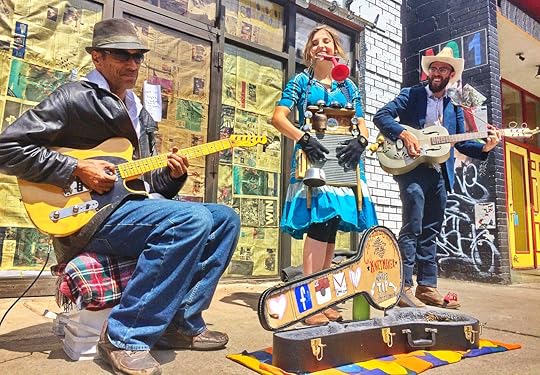
Photo: Gem Webb
Queen WestThis ultra-hip area was recently named the second coolest neighborhood in the world by Vogue magazine. While any such list is arbitrary, most Torontonians can agree that Queen West has the highest concentration of independently-owned eateries, shops, and nightlife. In addition to all this coolness, the fact that it is seen unofficially as the city’s second LGBTQ+ village is icing on the cake.
Distillery DistrictThis beautiful complex of forty-seven former Victorian distillery buildings now houses elegant shops, restaurants, cafes, live theatre and galleries. Toronto’s outdoor glittering Christmas market is held here every December.
Hanlan’s PointToronto’s only clothing optional beach has a strong gay following and is the perfect local escape. Take the ferry to the island, or call a tiki taxi boat for around $10 per person.
Kensington MarketA colorful mix of cultures, cheap eats, lively bars and vintage clothing. The market is an ideal place for finding odd items and great for people-watching. Sundays are pedestrian only.
High ParkHigh Park is Toronto’s largest and loveliest. Attractions and activities include the almost-too-popular cherry blossom trees (avoid weekends during blooming season if possible), and the annual outdoor Shakespeare in High Park productions which operate on a pay-what-you-can admission system.
Where to eat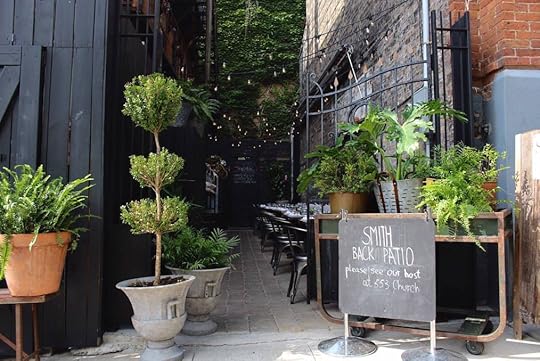
Photo: SMITH
SmithSmith is the best eatery in the village. Elegant, modern design with high-quality dishes. Try to grab a table on the back-alley patio if visiting in summer. Solid wine list and well-crafted cocktails. Reservations recommended.
Kanpai Snack BarThis popular Taiwanese hipster joint modelled its menu after the street market foods of East and South-East Asia. There is an impressive selection of local and microbrewery beer on tap.
Golden TurtleGolden Turtle might be bare bones but exceptional Vietnamese pho house to check out when you need refueling from shopping up and down ultra hip Ossington Avenue.
AloA relatively new fixture on the Toronto foodie map, Alo offers a high-end, multi-course tasting menu with a focus on modern interpretations of French recipes. Reservations required, the bar is walk-in friendly.
BucaA high-end Italian with ingredients of the utmost quality, as are the cocktails. Also, the all-too-rare-in-Toronto aperitivo happens here daily.
Torteria San CosmeIf you want mouth-watering Mexican tortas, head to this casual eatery in the market. Only nine varieties of griddled sandwiches are on offer here, which explains the high level of quality. End your melted Oaxacan cheese and chorizo feast with a sugary Churro. 
A version of this article was previously published on May 17, 2017, and was updated on March 23, 2022.
More like thisLGBTQ TravelDear Straight Allies, Please Don’t Come To Pride Until You’ve Understood These 6 ThingsMarch 22, 2022
A New Direct Flight From New York City To New Zealand Will Be the Fourth Longest in the World

It’s been a long time since travelers itching to get to New Zealand have heard any good news. But now things are starting to look up: Air New Zealand recently announced that its first non-stop flight from Auckland to New York City will start on September 17, 2022.
The flight will utilize John F. Kennedy Airport — a slight change from the Newark, New Jersey, flight that was scheduled to start before the pandemic scuttled that plan. And what’s more, the routes will get flight numbers 1 and 2, which are typically used for an airline’s flagship routes.
“In the six years leading up to Covid, the US visitor numbers to New Zealand doubled and looking at the average spend in New Zealand by US tourists,” Greg Foran, Air New Zealand’s CEO, said in a statement. “We estimate that this new route would contribute an additional $65 million per year into the local economy. Traditionally, flight numbers 1 and 2 are used for an airline’s flagship route. And that’s what New York will be – our flagship route.”
Air New Zealand will use a Boeing 787-9 Dreamliner, which holds about 300 passengers (27 business class seats, 33 premium economy seats, and 215 economy seats, to be exact). It’s a 16 hour flight to New York and a 17 and a half hour flight to New Zealand, so comfort is key here, which makes the Dreamliner’s smooth-flying, relatively spacious and quiet cabin with decked-out entertainment a good fit.
It’s the first non-stop flight from the East Coast of the United States to the South Pacific. It will also be the fourth-longest flight in the world, joining direct flights like LA to Singapore (17 hours), Dallas to Sydney (17 hours and 15 minutes), and New York to Singapore (a whopping 19 hours).
“New York is an iconic yet familiar city, a bucket list item,” Foran said. “And now for the first time, Kiwis can visit the city of all cities with a non-stop flight. New Zealand lets you slow down – in New York, everything is bigger and faster, it’s exciting and awe inspiring – and it’s now closer than ever.”
New York will be the seventh destination in North America with a non-stop flight to New Zealand. Chicago, Honolulu, Houston, Los Angeles, San Francisco, and Vancouver are the others.
In addition to the added flight, Air New Zealand strengthened its partnership with United Airlines to connect to domestic destinations in the US and Canada.
Your Full Guide To the Zion National Park Shuttle System With Maps, Tips, and More
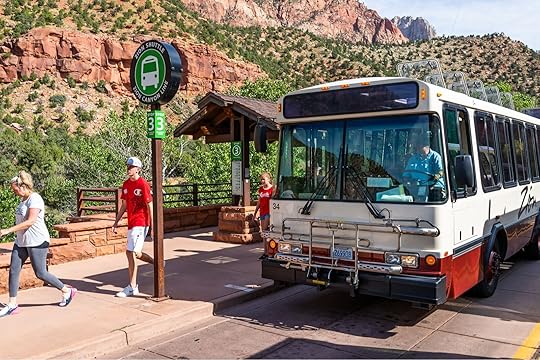
Zion National Park is a beautiful destination and an easy national park to visit, especially since it’s only a quick drive from Las Vegas. However, you can’t just drive into the park. Most most months out of the year, you’ll have to take a shuttle.
There are just a few basic things to know about Zion National Park’s shuttle system (called the Zion Canyon line), including the map, dates, tips for avoiding lines, and details on connecting between the park shuttle and the shuttle for the nearby town of Springdale.
The Zion National Park shuttle map and stops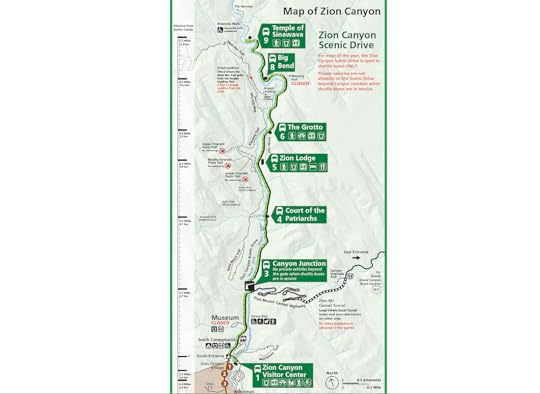
Photo: Zion National Park
Click here for the full-size map and schedule from the park.
The Zion Canyon Line is the free shuttle system that runs through Zion. If you take a peek at a Zion National Park shuttle map, you’ll see that it runs on a pretty simple circuit. The route begins at the park visitor center (just a few feet outside the park entrance) and stops at seven locations before reaching the Temple of Sinawava — the starting point for the famous Narrows hike.
Zion Shuttle Stops:Stop 1: Zion Canyon Visitor Center
Stop 2: Zion Human History Museum
Stop 3: Canyon Junction
Stop 4: Court of the Patriarchs
Stop 5: Zion Lodge/Emerald Pools Trailhead
Stop 6: The Grotto
Stop 7: Weeping Rock Trailhead
Stop 8: Big Bend
Stop 9: Temple of Sinawava
The shuttles run quite frequently, so you’ll never have to wait very long at a stop — 10 minutes or so at the longest. Every shuttle is the same and stops at every location, except for the Big Bend stop – the bus doesn’t stop when headed north (into the canyon), only when heading south (out of the canyon).
The shuttle takes roughly 45 minutes to get from stop one to stop nine. All passengers have to get off at the Temple of Sinawava, so you can’t spend your days looping the Zion National Park shuttle (not that you’d want to).
The Town of Springdale shuttle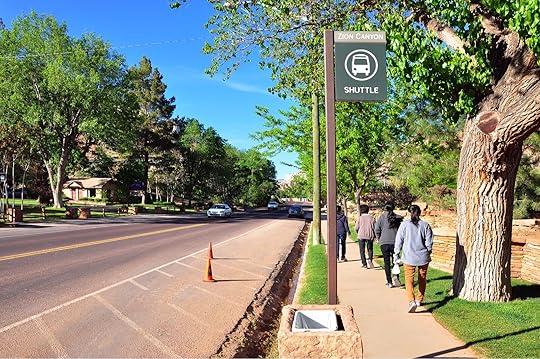
The Springdale town shuttle stops are well-marked throughout downtown. Photo: OLOS/Shutterstock
The Springdale shuttle is another free bus that comes by every 10 or 15 minutes and makes nine stops in Springdale, the gateway town to Zion. It begins from the south end of town at Majestic View Lodge (stop nine) and ends at Zion Canyon Village (stop one) directly next to the visitor center, where you catch the official Zion National Park shuttle.
The bus only stops where passengers are waiting, which means it can move fairly quickly, even if you’re parked all the way out by stop number nine. But it also means you’ll need to request a stop with the driver if you’re getting out before the visitors center.
Note that buses will not pick up passengers headed south (away from the park) between 9 AM and 1:30 PM at any stops other than the visitor center. So during those hours, be sure to get on the bus at the visitor center rather than walking to a different stop.
Zion National Park and Springdale shuttle dates and times
Most days in the winter, guests can drive into the park. Photo: Zion National Park
The most important thing to know is that private vehicles are not allowed to drive the Zion Canyon Scenic Drive when the Zion Canyon shuttle is running. This means the entire section between Canyon Junction (stop three) and the Temple of Sinawava (stop nine) is off-limits to cars.
The Zion Canyon line runs from mid-March to the end of November, give or take.
The park shuttle doesn’t run from December through March, except for the last week of December plus weekends in February and March. When the shuttle does run in the winter, the first bus departs from the visitor center at 8:00 AM and the last bus leaves the Temple of Sinawava at 5:45 PM.
The Springdale shuttle does not run every winter weekend that the Zion park shuttle runs. It usually runs the last week of December, but it doesn’t resume operations beyond that until March.
During spring, summer, and fall, the schedules are as follows:
The first bus leaves the Zion Visitor Center daily at 7 AMThe last bus departs from the Temple of Sinawava daily at 7:15 PMThe Town of Springdale shuttle runs daily between 8 AM and 8 PM.Parking for the Zion National Park shuttle
Arrive early if you’re hoping to park at the Zion Village parking lot and avoid the Springdale shuttle. Photo: Kristi Blokhin/Shutterstock
The easiest way to ride the Zion park shuttle is to find parking at the Zion Canyon Visitor Center at Zion Canyon Village. But during peak times, which tend to be weekends and every day in July and August, parking fills up quickly. You’ll want to arrive early (before 8 AM) to get a spot.
The good news is that there’s parking throughout Springdale if the Zion Canyon Village parking lot is full. Just keep an eye out for parking signs on the side streets off the main road in town (Rte. 9). While some street parking is free, lots usually charge around $10-$15 for the day. Be sure not to park in a space reserved for a private business or you may get towed.
You’ll be able to walk to a Springdale shuttle stop from every parking lot. That shuttle will take you to the Zion Village, where you’ll cross the pedestrian entrance and walk to the visitor center to catch the park shuttle. Note that the Springdale line doesn’t start running until 8 AM, unlike the Zion Canyon shuttle, which starts at 7 AM.
Do you need to pay or buy Zion National park shuttle tickets?You do not need a reservation or ticket to ride the shuttle in 2022 – it’s completely free.
Where do you pay to enter the park?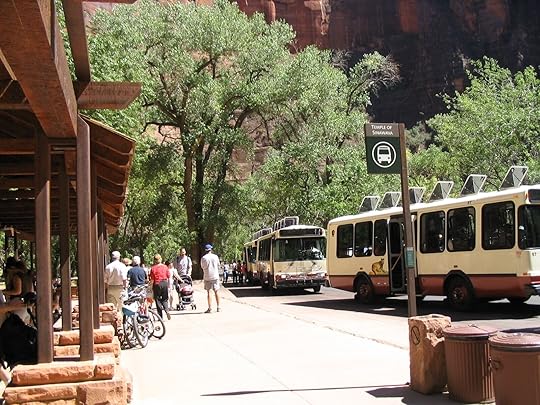
The Temple of Sinawava, the final stop on the Zion National Park Canyon Shuttle. Photo: Zion National Park
If you park at the Visitor Center, you’ll pay at the south entrance as you drive in. If you ride the bus or walk-in from Springdale, you’ll have to pay at the pedestrian entrance.
Can Zion Lodge guests drive into Zion Canyon?Yes, if you are a Zion Lodge guest or Canyon Trail Rides guest, you’re allowed to drive your vehicle to Zion Lodge, where there’s designated parking. However, you cannot drive your vehicle past Zion Lodge to reach other trailheads.
What can’t you bring on the shuttle?Bikes and strollers are allowed on the bike racks in the front of the shuttle, but e-bikes and fat-tire bikes are not allowed. You also can’t bring pets, excluding service animals.
If you’re in a wheelchair, you can certainly ride the shuttle. However, you can also obtain a special permit from the visitor center information desk to drive the road with your private vehicle.
What happens if you miss the last shuttle?Well, don’t. If you miss the last shuttle, you’ll be left with no other option than to walk the entire eight-mile road in the dark back to Zion Canyon Village. After walking about one-third of the way you’ll reach Zion Lodge, where you can call for a paid shuttle, but it’s still not a fun option (especially after a long day of hiking).
Zion park shuttle alternatives
Photo: Suzie Dundas
If riding the shuttle sounds like just too much hassle or you don’t want to be on a set schedule or deal with crowds, consider biking into the park.
You’ll start on the multi-use Parus Trail that parallels Highway 9. It leads to the Zion Canyon Scenic Drive, which you can bike or e-bike on. The only traffic will be the passing shuttle buses (try not to gloat too much as you go cruising by them in the fresh air). You can rent e-bikes at stores like Zion Outfitters or Zion Adventures; the latter has special attachments to hold your walking stick if you’re hiking the Narrows. Reservations are recommended, but not required. Rentals are usually around $100 for the day.
Of course, if you don’t mind peddling a bit you can rent non-assist bikes at most of the same shops. Just remember that while the road may look flat, it still gains nearly 1,200 feet of elevation over the 17 miles out-and-back.
Biking the highway is not only a great way to travel up and down Zion Canyon, but it’s also a really fun and scenic experience in and of itself, even if you don’t set foot on a trail.
More like thisWhere to StayThese Stunning Cabins Are the Ultimate Zion National Park Basecamp
You’ll Want To Take a Detour To See These 10 Massive Roadside Food Statues Around the World

If you’ve ever been on a long road trip, you’ve probably passed by roadside attractions before: those dusty monuments that no one adds to their itinerary on purpose but that usually draw in tourists eager to break up the monotony of boring spells stuck behind the wheel. Usually unsuspecting visitors stumble across the “world’s largest ball of twine,” in Kansas or The Cabazon Dinosaurs in California while passing through small towns that usually aren’t hubs for tourism. But people keep stopping at roadside attractions for reasons, for the charm or nostalgia, or the pure absurdity. And if you’re one of those people who can’t resist pulling over to the side of the road to snap a picture with a silly statue, you’ll be happy to know not only do these roadside attractions exist all over the world.
Travelers who love food are in luck, too: There are many roadside attractions that are in the shape of food. Roadside food statues have become legendary monuments to the culture and history of the towns where they are located. Especially if you’re searching for Instagram-worthy shots with your favorite snacks, it might be worth taking a detour from your regular plans to check out these roadside food statues. Sure, derailing your vacation just to gaze upon a roadside food statue of a giant artichoke sounds a little counterintuitive, but at least you can say you’ve seen one of the weirdest monuments in America afterward.
As you work on building your exact road trip or vacation itinerary, you might want to make room for these roadside food statues near highways and in small towns. You might just learn something about each region’s prized crops, snacks, and claims to fame. If you end up loving it, why not put together a bucket list of roadside food statues, and try to see every single one in the world. Here are 11 roadside food statues in the shape of food that need to be seen to be believed.
Springfield Donut, Springfield, Selwyn, New Zealand
Photo: Courtesy Selwyn District Council
On West Coast Road in Springfield, in Selwyn, New Zealand, a giant replica of the famed The Simpsons donut was erected in 2007 in an open field dotted with picnic tables. If you’re a fan of The Simpsons, you’ll know why the donut belongs there – the show takes place in a town called Springfield (though that one is supposed to be in America). According to Stephanie Murphy, Communications Assistant at the Selwyn District Council, the gigantic pink sprinkled 6-ton statue replaces an earlier fire-damaged version.
“The original doughnut was gifted to the town by 20th Century Fox in 2007 to help launch The Simpsons movie,” Murphy said, “in tribute to the special role the fictional Springfield has played in the popular cartoon and to celebrate Homer Simpson’s love of doughnuts.”
After you snap a photo in the shadow of this giant pastry, head over to Springfield Donuts, a miniature cart near the park which offers “donuts of all flavors, but most importantly the classic pink icing with sprinkles.”
Where: West Coast Road, Springfield, Selwyn, New Zealand
The Big Prawn, Ballina, New South Wales, Australia
Photo: Courtesy Ballina Coast and Hinterland
Travelers passing by 507 River Street in Ballina, New South Wales, Australia will find it impossible to miss the area’s 29-foot, 35-tonne prawn located near a variety of seafood shops.
According to Alicia Wallace, Ballina Destination Team Leader, at Ballina Coast and Hinterland, approximately “800,000 travelers visit the Big Prawn each year while in Ballina.”
Originally constructed in 1989, it was restored in 2013 for “AU $400,000 to add a tail and give the prawn a much needed makeover.”
Wallace also mentioned that the prawn, one of the most detailed and specific roadside food statues in the world, “is available for public viewing (and photos) at all hours of the day and night.” Visitors can also find a wide range of prawn souvenirs, like prawn socks, at the Visitor Information Center.
Where: 507 River Street, Ballina, New South Wales, Australia
The World’s Largest Prairie Chicken, Rothsay, Minnesota, US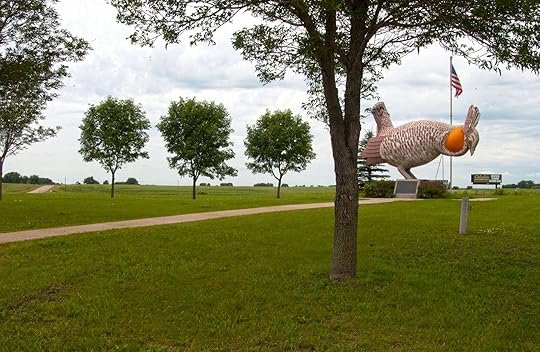
Photo: Courtesy Explore Minnesota
Visitors to Prairie Chicken Road in the small town of Rothsay, Minnesota can make a stop at The World’s Largest Prairie Chicken. The statue was designed in 1975; it stands 13-feet tall and weighs in at 9,000 pounds.
“The big bird is located in west central Minnesota’s Otter Tail County, an area known for its record-breaking roadside attractions, charming small towns and clean-cut natural environment comprised of rolling prairie lands—and the most lakes in any U.S. county,” said Alyssa Hayes at Explore Minnesota.
Those in the area who are interested in other large roadside attractions can also visit the 55-foot Jolly Green Giant in Blue Earth, Minnesota and the 65-foot tiger muskie in Madison.
Where: Prairie Chicken Road, Rothsay, Minnesota
The Big Potato, O’Leary, Prince Edward Island, Canada
Photo: The Canadian Potato Museuml
Visitors to O’Leary, Prince Edward Island on the east coast of Canada should not miss The Big Potato. The fiberglass 14-foot structure can be found at the entrance of The Canadian Potato Museum & PEI Potato Country Kitchen.
Donna Rowley, Museum Manager at The Canadian Potato Museum told Matador Network that although the museum has been operating since 1993, the potato was created in 1997, “as a way to attract more visitors to come to O’Leary and get a photo with The Big Potato.”
Visitors can also visit a local community museum, a potato based restaurant and gift shop within the grounds. Prior to Covid-19, the “museum would see upwards of 14,000 visitors,” Rowley added.
Where: 1 Dewar Lane, O’Leary, Prince Edward Island, Canada
The Big Apple, Stanthorpe, Queensland, Australia
Photo: Courtesy Granite Belt Wine & Tourism
Although technically in Thumbilah, The Big Apple is often referred to as being in Stanthorpe, 8 miles north.
“[The Big Apple] was built in 1978 by local tradesman John Ross, and erected by Brian Wilmot at Vincenzo’s, a popular tourist spot near Stanthorpe in Queensland, Australia,” said Monique Krause, Marketing Coordinator at Granite Belt Wine & Tourism. “The Big Apple was originally painted green, but has since been painted the color of a red Royal Gala apple.”
Krause also mentions that the restaurant next door, Vincenzo’s at The Big Apple “operates as a café, a deli and a wine bar and is a very popular spot for tourists.”
Krause also added that a million apple trees can be found in Stanthorpe, “where all of Queensland’s apple crop is grown,” which makes The Big Apple a tribute to this staple crop. “[The town] is famed for its apple and wine production, which is enjoyed by foodies and wine lovers coming to the region known as Granite Belt Wine Country.”
Travelers in the area may also be interested in attending The Stanthorpe Apple and Grape Harvest Festival, which celebrates the apple and grape harvest in town.
Where: 9 Watson Road, Thumbilah, Queensland, Australia
The Giant Artichoke, Castroville, California, US
Photo: Courtesy SeeMonterey.com
Visitors to Castroville, California, will be unable to miss the 20-foot Giant Artichoke in “The Artichoke Center of the World.”
“The Giant Artichoke has attracted millions of visitors since its inception in 1963,” said Rachel Dinbokowitz, PR Manager at Monterey County Convention and Visitors Bureau. “The 20 foot statue is a fitting tribute to the Artichoke Center of the World, Castroville, which still produces three-fourths of all California artichokes.”
Visitors can also stop at a nearby restaurant and market to try the vegetable once they are done gazing up at the artificial version, including one popular fried variety.
Where: 11261 Merritt Street, Castroville, California
The Biggest Wooden Rice Scoop, Miyajima, Hatsukaichi, Japan
Photo: Courtesy Miyajima Tourist Association
Visitors to Hatsukaichi in Hiroshima Prefecture, Japan should head to Miyajima within the city limits to see O-Shakushi, a 25-foot, 2.5 ton wooden rice scoop. Miyajima is famous for its rice scoops, and this particular one was made during the Showa period for posterity, and as a symbol of the town.
The rice scoop took two years and ten months to complete, but had to be left in storage for around fourteen years since a suitable display could not be found.
Where: Omotesando District, Miyajima, Hatsukaichi, Japan
The World’s Largest Catsup Bottle, Collinsville, Illinois, US
Photo: Courtesy World’s Largest Catsup Bottle Central Command
Visitors to Collinsville, Illinois, will be delighted to find a giant tribute to America’s favorite condiment at The World’s Largest Catsup Bottle.
“The World’s Largest Catsup Bottle stands proudly next to Route 159, just south of downtown Collinsville, Illinois,” said Mike Gassmann at the World’s Largest Catsup Bottle Central Command. “This unique 170 ft. tall water tower was built in 1949 by the W.E. Caldwell Company for the G.S. Suppiger catsup bottling plant, bottlers of Brooks old original rich & tangy catsup.”
Gassman explained that in 1995, the efforts of the Catsup Bottle Preservation Group saved the bottle “from demolition and beautifully restored to its original appearance.”
Where: 800 South Morrison Street, Collinsville, Illinois
The Giant Lobster, Shediac, New Brunswick, Canada
Photo: Courtesy Experience Shediac
Located in The Lobster Capital of the World, eastern Canada’s 35-foot monument to these delicious crustaceans in Shediac, New Brunswick was erected in 1989. The statue is a homage to lobsters, which are vital to this community’s economic prosperity.
“The Giant Lobster is one of Atlantic Canada’s best-known landmarks and most photographed attractions—300,000 visitors flock to Shediac each year and almost everyone makes a stop at the Rotary Park” said Jonathan Chevarie, Tourism Development Officer at the Town of Shediac.
According to Chevarie, the lobster “has appeared in national TV advertising and hit television shows such as Amazing Race Canada.”
Where: 229 Main Street, Shediac, New Brunswick, Canada
The Big Pineapple, Woombye, Queensland, Australia
Photo: Courtesy Big Pineapple Corporation
Near Brisbane on Queensland’s Sunshine Coast, “The Big Pineapple is a 13m fiberglass structure built in 1971,” which just celebrated its 50-year anniversary, according to Greg Bourke, Manager at The Big Pineapple.
“The Big Pineapple was a feature of roadside tourism, where a visit during the annual summer driving holiday season was a ‘must’ for most Australian families,” said Bourke. “In fact, The Big Pineapple Music Festival became Australia’s most visited tourism destination from the 1970s to the 1990s. The success of the Big Pineapple sprung from a novel idea in the 1970s, that a destination could be created from showcasing Queensland’s world class produce including pineapples.”
The pineapple was also the site of a royal visit in 1983, when Prince Charles and Princess Diana paid it a visit. Visitors stopping by today can also visit the area’s high ropes, zoo, zip line course, and Big Pineapple Music Festival.
Where: 76 Nambour Connection Rd, Woombye, Queensland, Australia 
This Georgia Town Is the Cherry Blossom Capital of the World. Here’s How To Best Experience It.

Cherry blossoms are one of the great joys of spring. Washington DC, Brooklyn, and a number of cities across Japan are famous for cherry blossom festivals that inspire people to get out and picnic under a canopy of pink and white flowers.
Yet when it comes to the city with the most cherry trees, and therefore the most cherry blossoms, Macon, Georgia, is far and away the winner. Macon has more than 350,000 Yoshino cherry trees. That’s more than double the population of the city (150,000) and many times the 3000-or-so cherry trees in DC, which is widely known for its cherry blossoms every year.
The sheer number, combined with the celebrations residents put on during bloom time, is why Macon is lovingly called the Cherry Blossom Capital of the World. There’s even an official Macon cherry blossom anthem that was released in 2020.
“It’s a, dare I say it, hidden gem,” Gary Wheat, president of Visit Macon, tells me over the phone. It’s a reason for visiting, he adds, as opposed to the cherry blossoms happening in a place where lots of people are already going regardless, like DC.
“I’ve been here five years, and one of the things that caught me was when the phones would start ringing from people asking if the cherry trees are blooming and if I could tell them exactly when they’re going to,” Wheat says. “And no, I can’t, but we do have our live webcam.”
The live bloom cam makes timing your visit a bit easier if you’re in the nearby area. And the webcam has become a bit of an attraction in and of itself — Wheat says the average time people spend on the cams is about four minutes, and there are more than 1.8 million views on the view counter.
How Macon became the cherry blossom capital of the world
Photo: Sean Pavone/Shutterstock
Macon is a haven for cherry trees thanks to William A. Fickling Sr. Fickling spotted a Yoshino cherry tree in his backyard in 1949 and didn’t know what it was because the trees were still rare in the South at that time. He learned the species on a business trip to Washington DC, and his love grew from there.
According to an oral account televised by WGXA, Carolyn Crayton, who became the executive director of the Keep Macon-Bibb Beautiful Commission, told Fickling she’d love to see a thousand trees planted over 10 years in Macon. In response, Fickling told her, “I don’t know if I’m going to live another 10 years, so I’ll give you 10,000 in one year.” One thing led to another and now there are too many for one person to count.
Fickling’s 1990 obituary in the Los Angeles Times credits him with giving away more than 120,000 Yoshino trees over his lifetime. A plaque in Macon puts that number at more than 180,000 throughout Bibb County.
In 1982, the trees and their famous blossoms had solidified their place in Macon culture so much so that the Crayton created the Cherry Blossom Festival (the same one that’s held today).
The Fickling family carries on this legacy with annual updates to the cherry trees on Fickling Farm in north Macon four generations later to replace damaged trees and add new ones.
When do the cherry blossoms bloom and when is the cherry blossom festival in Macon?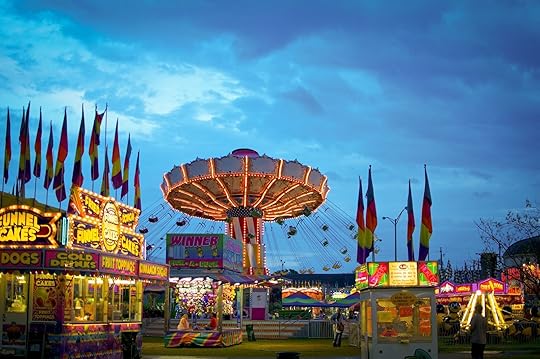
Photo: Visit Macon
Fickling kept a log of Macon’s cherry blossom bloom time for more than 10 years. By that data, the average peak bloom date is March 23. The exact date, however, depends on the conditions. Mild winters can lead to a later bloom, and there are microclimates across Macon so different parts of the city will see blooms at different times. Younger trees also bloom earlier, and while some trees can bloom for one week others bloom for two. Then, of course, there’s whether a storm comes through and takes all the flowers off shortly after they’ve come out.
The festival is planned far in advance for mid March. In 2022, the festival saw headlining country music stars like Walker Hayes and Niko Moon. Dogs are more then welcome, they’re encouraged. If you can’t bring your own pup you can see some dogs compete in festival events like the weiner dog race or the dock diving competition.
Where to see cherry blossoms in Macon
Photo: Nono901/Shutterstock
You could just wander aimlessly and stumble on a bunch of blooming trees if you time a visit right. However, for the best cherry blossom views, Visit Macon made a driveable Cherry Blossom Trail with a map (find a digital version here or pick up a physical map in town) that runs from Carolyn Crayton Park to Bass Road.
airplane bathroom trash cans

This is the Travel Take, where Matador’s writers and editors make the case for their favorite travel hacks, tips, and personal tics.
Science says that the germiest surface in an airplane is the tray table, and flight attendants warn that the plane’s windows are filthy, too. But this time, science and cabin crews have it all wrong. No matter the amount of swabbing and analyzing that is carried on, I am convinced that the grossest parts of an airplane are the bathroom trash cans.
I don’t think many of us think twice before eating the obligatory dry, unflavorful airplane food on that flimsy plastic rectangle, but I would bet a good chunk of cash that every single person who has ever used an airplane bathroom trash can in economy has done so with absolute revulsion.
The way I use airplane bathroom trash cans is probably the same most passengers do. I wash my hands, grab a rough brown paper towel to dry them, use that same paper towel to flush the toilet and open the latch on the bathroom door, and then, with the tip of my fingers scarcely protected by the now nearly disintegrated towel, I push gingerly on the dreaded flap of the airplane bathroom trash can, and attempt to drop my trash in as quickly as possible. Of course, because I have no desire to touch this abominable piece of equipment any longer than necessary with my clean hands, I never manage to push the whole thing down the hatch properly, giving the bathroom the air of griminess I loathe so much. I am eaten by guilt every time I pee on a plane.
But I am very ready to shift the responsibility of the grubbiness on to the people who design airplane bathroom trash cans. Who thought that a manually operated flap was the way to go? Having to touch the lid of the trash can is akin to just grabbing a handful of the waste inside of it: every item put into the trash can has touched that lid. That can be a dirty diaper, a tissue full of snot, a used tampon, or anything else that fits in there and needs getting rid of. And having to touch the flap of the trash can after having washed your hands makes even less sense.
The solutions are obviousMaking sure that airplane bathrooms have as few touch surfaces as possible should be the top priority for designers and airlines. Airplane toilet lids should open and close on their own at every use, the toilets should flush automatically, the tap and the soap dispenser should be motion-activated, and airplane bathroom trash cans should not require that passengers put their hands halfway down the hatch.
One solution that seems painfully obvious, yet is only found in a few airplane bathrooms, is a trash can activated by a foot pedal. I’ve personally never seen one in an airplane, but Youtube flight reviewer Tiezheng Bu assures me by email that “a few airlines feature the foot pedal on their aircraft,” including Dreamliners and A330s on Turkish Airlines, Saudia, and Etihad.
These should be ubiquitous. People have been able to buy foot pedal trash cans for their homes for decades, so why is it that airplane bathrooms are so behind? If motion sensors are too expensive or complicated, foot pedals could be used for a range of touch-free purposes, such as opening the toilet lid, flushing, activating the tap, etc.
One airline that’s trying hard to provide its passengers with a cleaner airplane bathroom experience is ANA (All Nippon Airways). In 2021, the Japanese airline fitted 21 of its planes with hand-free bathroom doors. The system allows passengers to use their elbows to open the door from both outside and inside, as well as lock and unlock it.
Just like ANA’s hand-free lavatory door, there are simple, mechanical solutions out there to make airplane bathrooms less yucky and protect the passengers from the transmission of viruses, bacterias, or other microbes. In the meantime, keep your family-size bottle of sanitizer handy. 
I Try Pizza in Every Country I Visit, and You Should Too

This is the Travel Take, where Matador’s writers and editors make the case for their favorite travel hacks, tips, and personal tics.
There’s a famous quote from George Orwell’s Animal Farm that says, “all animals are equal, but some animals are more equal than others.” The same applies to pizza.
Most pizza (cheese pizza, anyway) is equal in the basic pillars of its construction, and unless someone really screws it up, it’s always pretty good. Your basic pizza joint will serve this type of pizza, and it often is similar to one of the seven classic types of Italian pizza. Then there are the special spots you write home about: The Brooklyn pizza joint that goes back three generations, the Italian hole in the wall that goes back nine, the trendy spots from an old-school pizza guy — you know the place.
But it’s not just New York City or Italy that you should be seeking out pizza. What about Ireland? Estonia? Macedonia? Sure, if you order pizza in Paris your travel companion might pretend they’re not associated with you. But I make it a point to get at least one pizza in every country, and it’s provided insight into various local cultures that would be hard to find in a museum.

Photo: rawf8/Shutterstock
It started as a joke. I was on a road trip through the Balkans with a friend – seven countries in 10 days – and on day three, I was ready for some comfort food.
“You’re really getting pizza in Serbia?” my friend, on his sixth goulash of the trip, asked.
I didn’t expect much. I just wanted something familiar. Something I didn’t expect to love, but knew to a near certainty that I wouldn’t hate. And the Serbian pizza was pretty good: thin, crispy crust, a not-too-sweet sauce, virtually no grease, and a hint of spices that I couldn’t quite place, but which mightily intrigued me. It got me thinking, if Serbian pizza is this good, what about the rest of the countries I was visiting?
Apparently, I had been thinking aloud.
“What’re you gonna do, get another one in Bosnia?” my friend laughed. We would be in Sarajevo that night.
Fast forward six hours, and I was ordering another pizza in Sarajevo – partly to piss off my fast-food averse friend and partly because I was genuinely curious. The floodgates had officially opened. From a Dalmatian ham-topped margherita in Croatia to pizza with sour cream and hot sauce accompaniments in Macedonia, I made it my mission to order a pie in every country we visited. That was five years ago, and I’ve been doing it ever since.

Photo: sy-uname/Shutterstock
To the uninitiated, pizza is a simple food that’s the same everywhere you go. On a deeper level, it’s more like a canvas an artist uses to paint a masterpiece. A Croatian and Indonesian artist may paint the same subject, but they’d do so through the lens of different cultures and experiences. So, too, do pizza chefs around the world wield sauce, cheese, and crust to work their wildly unique magic.
By virtue of its familiar template, pizza is a delicious window into the culinary world of other cultures. It’s one of those rare foods that everyone knows, is available pretty much everywhere, and has simple enough ingredients to be understood and appreciated even by people who eat more for sustenance than pleasure. When a pizzaiolo deviates from the familiar template, it tells us something about what that culture values in their food.
In Croatia, they top their pizzas with Dalmatian ham. In Macedonia, they sprinkle on some Macedonian hot sauce, which is only available at local supermarkets. In South Korea, there’s bulgogi pizza topped with beef. In Turkey, lahmacun resembles a Mediterranean pita bread topped with veggies.
These are not earth-shattering deviations from the classic pizza formula, but they do give you a sneak peek into other countries’ culinary traditions – and how artists embellish an already beautiful painting to make it their own.
Calm, romantic European destinations
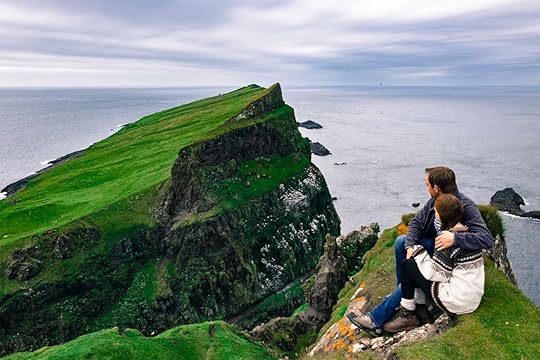
Everyone has their own ideas about what’s romantic and what’s not. But if there’s one thing we can all agree on, it’s that hordes of selfie-stick-holding tourists does not spell l’amour. When you head off on vacation together, choosing somewhere quiet means you can focus on each other instead of getting distracted (and exhausted) by jostling crowds. It also means that you can enjoy the best beach and sunset spots without loud music, rowdy bachelorette parties, and shrieking kids ruining your peace. So if you want relaxation and seclusion to play a starring role in your next trip away, here are the most romantic European destinations to visit if you both love solitude.
We hope you love the romantic European destinations we recommend! Just so you know, Matador may collect a small commission from the links on this page if you decide to book a stay. See our full Advertiser Disclosure here.
1. County Donegal, Ireland
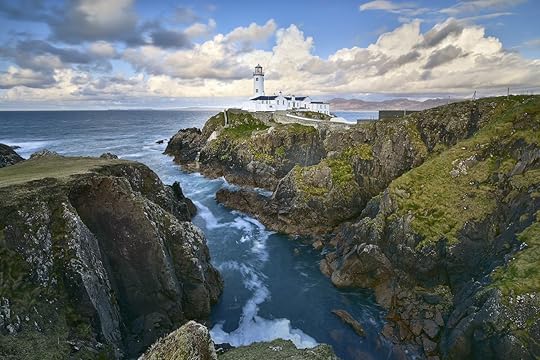
Photo: Jan Miko/Shutterstock
If deserted moors, fir forests, and swaths of empty coastline sound like your cup of tea, then turn your attention to County Donegal. The best time to visit is November through March when the local holiday-makers have packed up and left, and the pubs are empty save a local or two (and the ubiquitous pub dog, of course). You’ll find plenty of affordable accommodations, but for maximum peace and quiet, choose a traditional stone cottage with mountain views — bonus points if you get one with a cozy, wood-burning stove. Add Glenveagh Castle to your to-do list and channel your inner Gandalf with a wander around the abandoned church at the foot of Mount Errigal. If you find yourself in need of a little human company after all that time on the moors, Nancy’s Bar in Ardara does the best Irish Coffee for miles around.
Where to stay

Photo: Airbnb

Photo: Airbnb

Photo: Airbnb
This cozy cabin on Airbnb is a perfect hideaway in Donegal. A romantic wood-burning stove sits in the center of the cabin and an alcove double bed adds a little more charm to this idyllic rental.
2. Košice and the Tatra Mountains, Slovakia
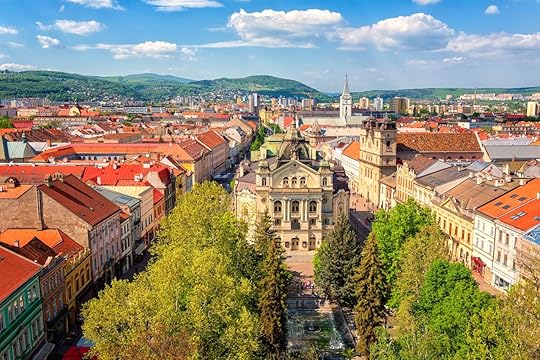
Photo: Uhryn Larysa/Shutterstock
Tourists are a rare sight in East Slovakia’s largest city — something that’s all the more surprising when you consider the cheap eats, even cheaper beer, and beautiful old quarter, a colorful mashup of baroque buildings, cozy coffee shops, and Gothic monuments. Most of the city’s sights are concentrated along the town’s central street and shouldn’t take you more than a few hours to explore. After you’ve had your fill of dumplings, beer, and sightseeing, hop in a hired car and drive out to the nearby Tatras mountains for a couple of days. The best time to visit is in late spring when the snow has melted and the hills are full of wildflowers. For maximum solitude, visit during the week to avoid weekend day-trippers from the nearby towns and cities.
Where to stay
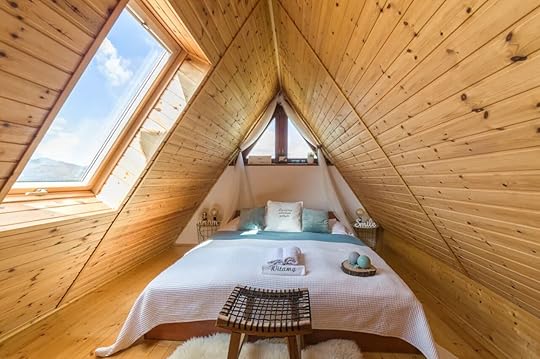
Photo: Airbnb

Photo: Airbnb
With a panorama of the Tatra Mountains, this house is about remote as you can get in the region. It sits over 1000 meters above sea leave and comes with all modern amenities and the added bonus of a sauna and barbeque.
3. Faroe Islands, Denmark
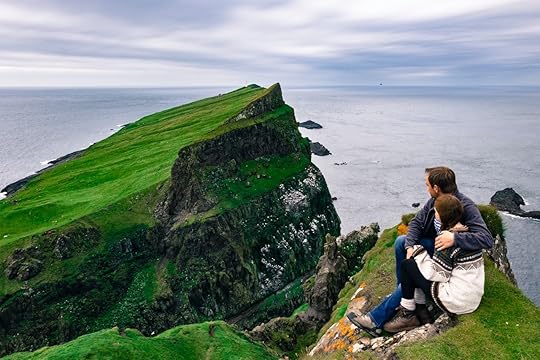
Photo: Sophie Dover/Shutterstock
The Faroe Islands have become something of a holy grail for off-the-beaten-path enthusiasts, and it’s easy to see why: Sat in the North Sea halfway between Iceland and Norway, this collection of wild and windy islands has otherworldly scenery that’s equal parts majestic and bleak. There are wave-battered cliffs, treeless moorlands, and black basalt dunes to explore, and the painted wooden houses are like something out of a fairytale. So why is it still so quiet? Well, first, the islands are expensive to fly to. And secondly, the weather default is windy, wet, and cold (summers generally hover around 54°F), which puts some people off. But if you’re ok with wrapping up warm then you’ll be rewarded with human-free fjordland walks and plenty of peace and quiet. Plus, the cooler climate offers plenty of opportunities to snuggle up together by an open fire.
Where to stay

Photo: Airbnb
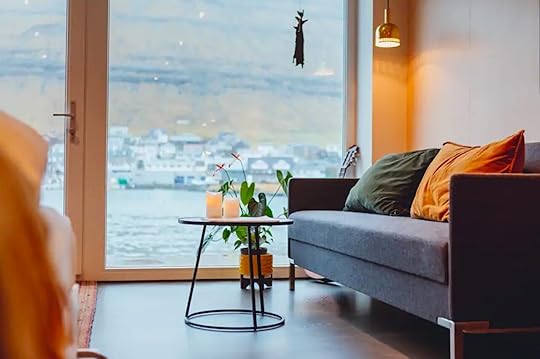
Photo: Airbnb
This charming yellow boathouse is located in Klaksvík’s center. Situated on the edge of the water, you can sit with the doors open and watch the ducks and the bustling city shore.
4. Cauterets, French Pyrenees
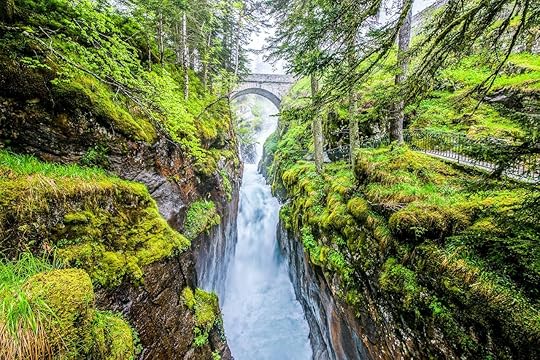
Photo: Alexander Uhrin/Shutterstock
Spring or autumn is the best time to visit because the snow has melted, and the families and skiers have packed up and left. Solitude-lovers heading here during the shoulder seasons will be rewarded with quiet mountain trails and a spot at the best lakes, without screaming kids and whining drones polluting the airspace. Many of the villages and towns are ski resorts, which means shops and bars either shut up early or stay closed entirely during shoulder season — so be prepared for a ghost town vibe after sundown. That said, you should be able to find more than a couple of places serving fondue, raclette, and wine — plus the smaller crowds means you should be able to get a cozy table for two without booking.
Where to stay

Photo: Airbnb

Photo: Airbnb
This cozy chalet in Cauterets is a great base for exploring the region. It comes with everything you need for a mini-break, modern amenities, a fully equipt kitchen, including the vitally important raclette and fondue pot.
5. Favignana, Sicily
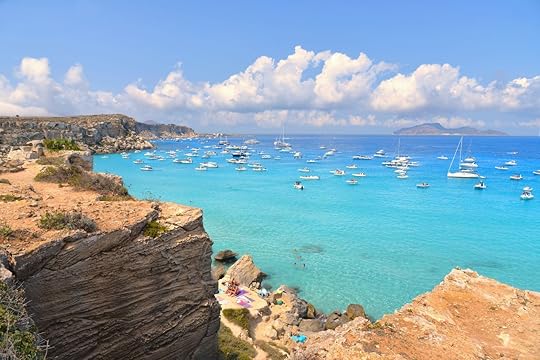
Photo: poludziber/Shutterstock
Solitude-lovers have a love-hate relationship with beaches: The prettier they are, the more crowded they are, which usually means some kind of compromise needs to be made. Not so with Favignana, a teeny island 12 miles off the coast of Sicily. Not only is it quiet people-wise, but it’s almost car-free. Rent a bike and spend the day stopping off at any cove that takes your fancy for a secluded swim (the electric-blue water of Cala Rossa is a must-see). All but one of the beaches are pebbly, so bring sea shoes for clambering over the rocks and watch out for prickly sea urchins, which sometimes cling to the sea bed. These islands are all but deserted in the warm late spring and early autumn, but, as with most coast destinations, avoid visiting from late June to August when the local schools close, and families flock towards the ocean.
Where to stay

Photo: Airbnb
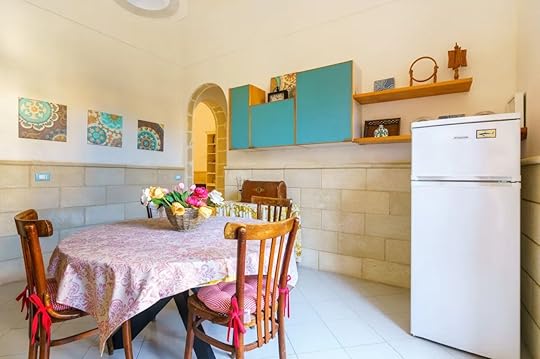
Photo: Airbnb

Photo: Airbnb
Centrally located, this Airbnb is close to the harbor, the square and the beach. One of this rental’s major selling points is its garden, which is a vibrant yet peaceful space to relax in the Sicilian sunshine.
6. Solcava, Slovenia
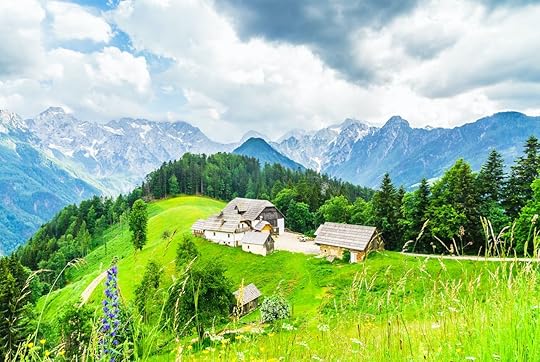
Photo: streetflash/Shutterstock
This quiet corner of the Alps has everything you’d want from the more famous regions — think cowbells, mountain meadows, and cute wooden chalets — minus the high prices and, most importantly, the crowds. Fly into Ljubljana and spend a couple of days sampling sausage and strudel before heading off in a hire car into the mountains. Book a secluded holiday home or go full Heidi with a stay in a traditional wooden mountain hut. Hiking and climbing are the activities de rigueur, but if you’re not into exertion, you can drive (or walk) around the Matkov Kot valley until you find a grassy pasture for a romantic picnic.
Where to stay

Photo: Airbnb

Photo: Airbnb

Photo: Airbnb
This renovated cottage is located in the alpine valley of Zgornje Jezersko and has stunning views of the mountainous region. Although it’s in the middle of the valley, it is very private. A perfect escape for an adventurous couple.
7. Masurian Lakes, Poland
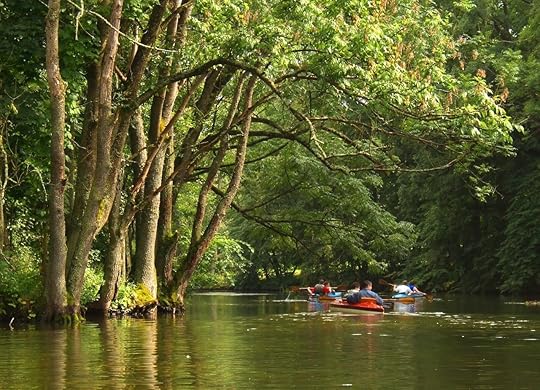
Photo: Andrzej Puchta/Shutterstock
Lakes are notoriously touristy, but in one northern corner of Poland, you can canoe through 3,000 secluded waterways without bumping boughs. Hire a kayak and take the signposted Krutynia river trail and camp overnight. Or, if you’re visiting in winter, choose a farm stay in one of the villages or go all-out hermit with a high-gabled waterside cabin. Top tip: The lakeside resorts of Gizycko, Mikolajki, Wegorzewo can fill up with Polish holidaymakers in the summer, so either visit in the off-seasons (spring, autumn, and winter) or stay in a neighboring village.
Where to stay

Photo: Airbnb
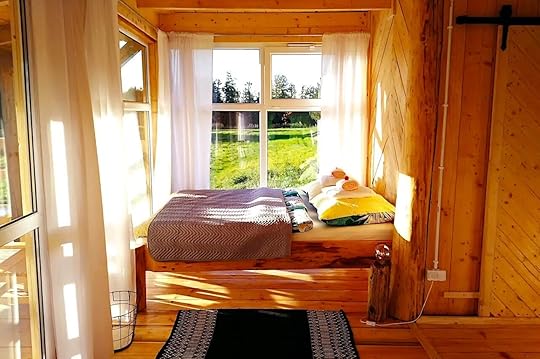
Photo: Airbnb

Photo: Airbnb
Many of the guests who stayed at this Airbnb remarked it was one of the best they have ever stayed at — and it’s not hard to see why. This cute little cottage is open-planned and drenched in light.
8. Azores, Portugal
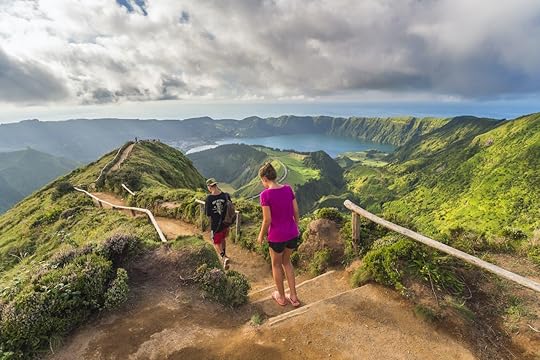
Photo: EyesTravelling/Shutterstock
This remote archipelago of nine volcanic islands sits in the Atlantic Ocean, about 840 miles off the coast of Portugal and roughly the same distance again from Morocco. Activities include whale-watching, kayaking, and diving with dolphins, plus there are hot springs to soak in, volcano hikes to be had, miles of empty wildflower-fringed roads to drive along. There are nine islands in total to explore, but for maximum solitude, check out the almost-abandoned Graciosa, which hosts daily summer Holy Ghost processions; Crovo, which is home to only 400 people; and Flores, an empty wilderness of waterfalls and flowers.
Where to stay

Photo: Airbnb

Photo: Airbnb
Located in The Furnas, this house has a modern and minimalist aesthetic with incredible views of the valley below.
9. Burano, Italy

Photo: waku/Shutterstock
If you’re not a people person, then notoriously busy Venice is probably last on your list. But wait — there is a way to get your fill of pasta and canals minus the tourists. Burano is a small island a 30-minute boat ride away, and from November to mid-February, it’s almost deserted (with the exception of the weeks either side of Christmas and New Years). Head out by ferry in the early morning, spend your afternoon walking through the island’s rainbow-hued streets then fill up on seafood before heading back. Alternatively, book a room on the island itself and you’ll get to see the town at its most quiet once the daytrippers have all gone home. The winter’s also a great time to explore Venice in general, which, during the colder months, really empties out. Plus, there’s something extra romantic about getting lost in the misty backstreets before piling into a steamy trattoria for something hot and carby.
Where to stay

Photo: Airbnb

Photo: Airbnb

Photo: Airbnb
This traditional Venician house has a stunning outdoor courtyard and view of the lagoon. The house is spacious and spread out over two floors. It’s also within a very short walking distance to restaurants and bars. 
March 21, 2022
Sustainability Wins: 5 Pieces of News To Help You Feel Good About Travel This Summer
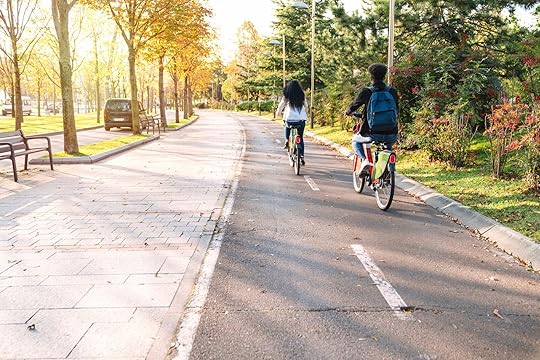
In 2022, sustainable travel is all the rage. With COVID-related travel restrictions dropping around the globe and people keen to travel more again, many are asking themselves how they can be more mindful of their travel footprint going forward. But it’s not easy to know how, and digging through news headlines is tough. So for this week’s Climate Win, we’re doing it for you — breaking down five recent pieces of good news from the travel industry all about sustainable travel, making it easier for us all to venture with less guilt.
1. Airbus buys carbon removal creditsYou’re reading The Climate Win, the most positive sustainability news around the world every week.
The first story is about the emerging technology of carbon removal credits (not to be confused with carbon offset credits). Airbus announced last week that it has purchased 400,000 tons of carbon removal credits from the company 1PointFive. 1PointFive’s technology isn’t scaled to the point yet where it can accommodate such a large purchase, so this is basically a promise that Airbus will buy 400,000 tons when it can. But since Airbus already paid for the credits, it’s effectively a massive interest-free loan from Airbus to help push the budding technology into the mainstream. Construction on the massive facility (which will be in Texas) should start later this year.
All major US airlines have Airbus planes in their fleets, as do most major international carriers. So if you have the choice between choosing an Airbus plane or a Boeing plane for your next flight (check under the flight info when buying a ticket to see the aircraft), opt for Airbus. The gesture is largely symbolic, but if enough buzz builds around the Airbus-1PointFive partnership, it could push Boeing to make a similar commitment.
2. Latin American countries sign sustainable travel declaration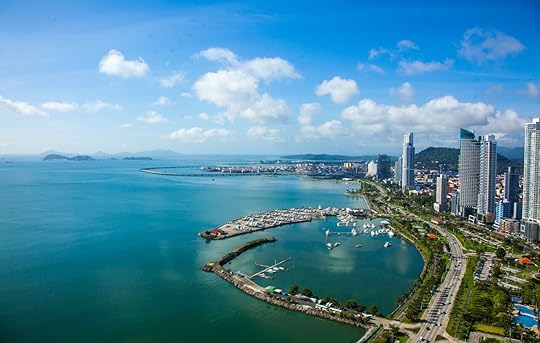
Photo: Cris Young/Shutterstock
Led by Panama, a group of Latin American countries signed a pledge called the “Transformation Towards the Tourism of the Future.” This declaration commits signees to build their tourism industries around three heritage pillars: cultural heritage to promote sustainable communities, green heritage to promote biodiversity and nature, and blue heritage to promote ocean health and recreation. With all, conservation and ecotourism at the forefront. Other countries signed on to the agreement include Colombia, Costa Rica, Ecuador, Guatemala, and Honduras.
“From conserving wildlife and ecosystems, to fostering the growth of local communities, our approach is to appeal to the sensibilities of today’s traveler for immersive engagement and a desire to return,” says Fernando Fondevila, PROMTUR Panama’s Chief Executive Officer, in the press release.
3. Hawaii gets its first certified carbon-neutral resortWaikiki, the popular Oahu tourist town just south of Honolulu, will be home to the state’s first certified carbon-neutral resort. Alohilani Resort is currently undergoing audit and accreditation to gain the eco-friendly certification, Forbes reported.
The resort will neutralize not just direct emissions, but also emissions caused by resort guests and emissions released in the resort’s supply chain, the report noted. The move is likely to spur other resorts across Hawaii to attain the same sustainability credentials. So if you’re looking for a place to stay this summer in Hawaii, give Alohilani Resort a look.
4. E-bike sales boom due to high gas prices
Photo: Umomos/Shutterstock
Okay, the high gas prices have their downsides. But there’s good news: steep fees at gas pumps have driven some US consumers back to simpler forms of transport. Sales of electric bikes have skyrocketed in recent weeks, at least in part due to the jump in fuel prices following bans on Russian oil enacted by the US and elsewhere. E-bikes had already boomed since the start of the COVID-19 pandemic, and it appears their popularity is far from waning.
“I’m not going to tell you it’s all because of fuel,” Pedego Electric Bike CEO Don DiCostanzo told Bloomberg. “But I absolutely believe it’s acting as a catalyst to get more people to consider alternate forms of transportation.” You can support the craze by taking an e-bike tour (or using a bike share program) while visiting a new city this summer.
5. Canadian heli-ski operator becomes carbon neutralWe close the Climate Win with news for dedicated skiers and snowboarders. A heli-ski trip is a big-ticket adventure with a big carbon footprint, but one company is offsetting the carbon it creates. Northern Escape Heli-Skiing in Terrace, British Columbia, recently became the world’s first carbon-neutral heli-ski operator. After hiring a third-party auditor to conduct a review of its emissions, the company partnered with an environmental NGO to purchase verified offsets equivalent to what it emits. If heli-skiing is your dream powder trip but you’re worried about the environmental impact, Northern Escape is a great company to go with.
More like thisCyclingWatch: Serial 1’s New E-Bike Etiquette Video Is a Hilarious Lesson in Sharing the Road
Matador Network's Blog
- Matador Network's profile
- 6 followers



